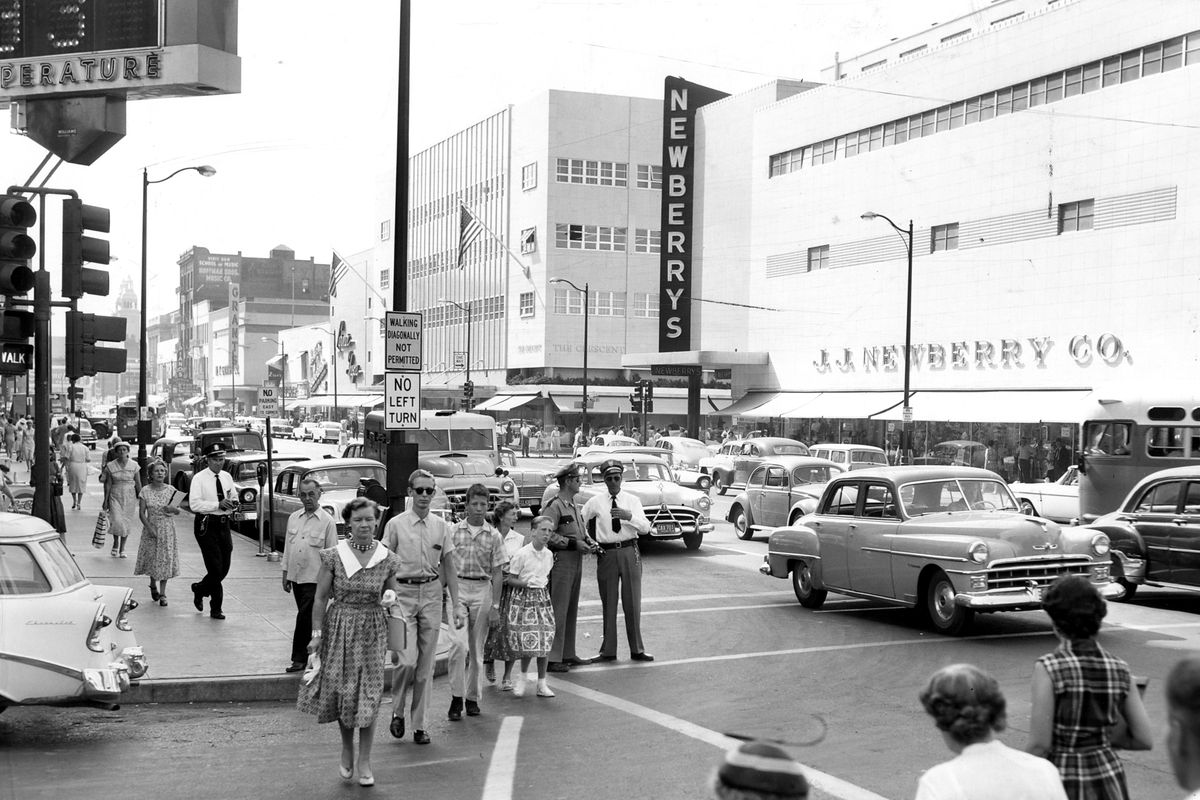Then and Now photos: Newberry’s five-and-dime

A distinctly American retail phenomenon, the five-and-dime store, began in the 19th century but became wildly popular in the post-World War II era.
The formula was low prices, literally only nickels and dimes, for dry goods like razor blades, bobby pins and shoelaces sold from countertop bins. A lunch counter offered a grilled cheese sandwich and a malt for pocket change. Many stores also sold small pets, like goldfish, and had booths where you could have your picture taken.
Woolworth’s and Newberry’s, which took over a Britt’s variety store in 1930, were fixtures in downtown Spokane for several decades. Carolyn Hage Nunemaker recalls in her book “Downtown Spokane Images: 1930-1949” that in the 1930s, Newberry’s often had a piano player plunking away with a boom-chuck boom-chuck beat to “demonstrate” sheet music for sale.
Some remember a “colored only” sign at one end of the Woolworth’s lunch counter, but Clarence Freeman, a black businessman who moved to Spokane in 1918, told The Spokesman-Review in 2001 that it was one of the few places downtown where a black man would be served at all before WWII.
The stores’ popularity peaked in the late 1950s and early 1960s before declining over the next two decades while suburban shopping centers and malls proliferated. Spokane’s Woolworth’s closed in the 1980s, and Newberry’s closed in 1995. The dime store idea splintered into dollar stores, convenience stores, drugstores, fast-food restaurants and mass retailers like Kmart and Wal-Mart.
– Jesse Tinsley